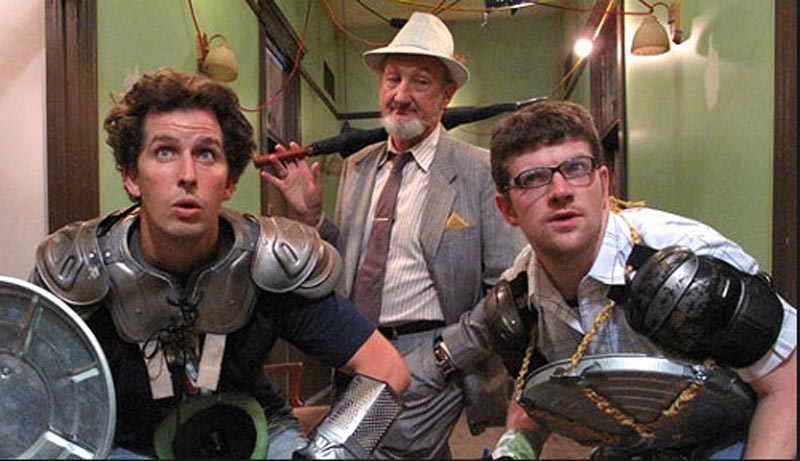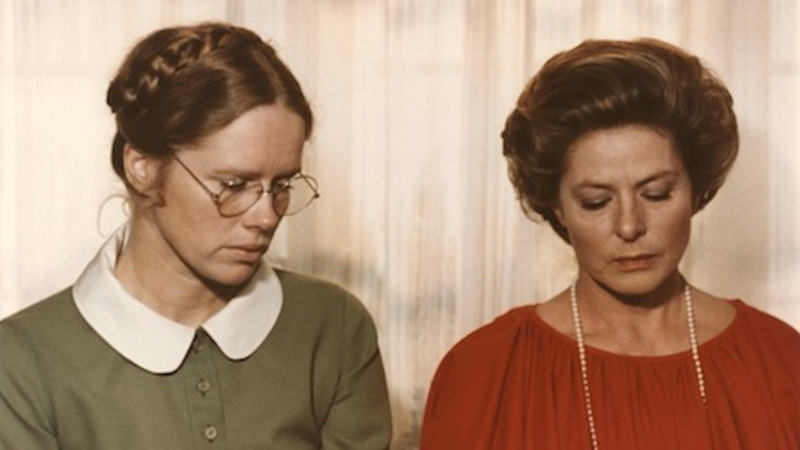Sometimes critics can overanalyze a book or film when it can be as simple as one thing: the “wow” factor.
People were flat-out wowed by “The Little Mermaid” in 1989, so much so that there was talk of a Disney Renaissance. What impressed was the level of detail and the Broadway treatment that filmmakers gave an animated feature. When that title was followed by “Beauty and the Beast,” “Aladdin,” “The Lion King,” “Pocahontas,” “The Hunchback of Notre Dame,” “Hercules,” “Mulan,” and “Tarzan,” there was talk of a Silver Age in Disney animation—the Golden, of course, beginning with “Snow White” and ending with “Sleeping Beauty.”
Then, when “The Emperor’s New Groove” was released in 2000, most critics sensed that “Tarzan” might indeed be the last film in that so-called Silver Age. And it was.
There’s nothing Broadway about this Edgar Rice Burroughs adaptation, but the wow factor is still there. As John J. Puccio expressed in his DVD review, “it’s one of Disney’s best modern animations,” and that’s because Disney used a process they called “Deep Canvas” that gave the jungle a realistic 3-D look, and because animator Glen Keane gave Tarzan the ability to “surf” the jungle canopy instead of being restricted to vine-swinging—an inspiration he got from his skateboarding and surfing son. It was like bulking up an old legend, and this animated Tarzan is about as buff as anyone who ever played Burroughs’ fictional hero.
I’ve seen just about every Tarzan movie made, and have to confess that I still have a soft spot for the Johnny Weismueller films. But Disney’s animated “Tarzan” represents one of the strongest narratives to tackle the legend of an orphaned baby raised by apes. Some of those early Tarzan movies now seem a little racist, and Disney solved that potential problem by not including any Africans at all. It’s apes vs. white hunters and a leopard in this animated feature, which begins by intercutting scenes of how baby Tarzan came to be orphaned and how one ape, Kala (Glenn Close), lost her baby. Because we get talking animals, we get a better appreciation for the relationships that Tarzan forged, and because it’s animation we get a Tarzan who is more believably a combination of animal and human movement than would be humanly possible with actors.
It’s a jungle out there, and Disney makes no attempt to soft-peddle that part. There are plenty of Bambi’s mother moments. But the filmmakers do balance any naturalism and menace in the movie with humor, songs, cute characters, and the eye-popping animation that makes the jungle itself come alive. If memory serves, “Tarzan” was the first full-length Disney animated feature to spotlight a single performer (Phil Collins) for the entire soundtrack—something that DreamWorks would imitate a year later when they used Elton John for all the songs in “The Road to El Dorado”—and that continuity also added to the film’s uniqueness. One of Collins’ songs, “You’ll Be in My Heart,” won an Oscar for Best Original Song.
Then again, a Disney movie floats or sinks on the basis of its characters. How much personality do they have? How likeable are they? How distinctly original are they? In this too, “Tarzan” makes the grade. Whether it’s young or grown-up Tarzan and ape-buddy Terk, the animation and the voice talents—Alex D. Linz, Tony Goldwyn and Rosie O’Donnell—really give those characters life. So does Minnie Driver as Jane, Tarzan’s love interest, and Lance Henriksen as Kerchak, the fierce alpha ape who provides more narrative interest. I’ve heard that some critics felt that the hunter Clayton (Brian Blessed) wasn’t a strong enough villain, but come on, people, this is an adaptation and that’s the hand the directors were dealt. I thought Chris Buck and Kevin Lima did a great job of spreading the villainy around, so that we get two points of menace in “Tarzan”: the leopard and the hunter.
Nothing, though, stands out as much as the animation in this Disney gem. Some sequences of Tarzan “riding” the trees or a water segment involving hippos and a young ape-boy will be forever etched in memory, they’re so well done and so full of “wow.” That’s the way much of the film plays out.
Video:
The Blu-ray version of “Tarzan” really supports the “wow” factor. Scene after scene amazes you with the level of animation and the lushness of Disney’s Deep Canvas jungle. “Tarzan” is presented in 1.78:1 aspect ratio and looks terrific in HD, with no banding or other artifacts evident in the AVC/MPEG-4 transfer. Colors pop, and the edges are so sharply defined that even non-jungle scenes offer the illusion of 3-dimensionality.
Audio:
The featured audio is a robust English DTS-HD MA 5.1 that’s wholly immersive, involving the rear speakers at every sharp turn and distributing the sound so effectively that it fills the room rather than lingering near the source. The bass is strong and sounds like shots and Tarzan yells and ape anger all pulse with life. Additional audio options are French and Spanish Dolby Digital 5.1, with subtitles in English SDH, French and Spanish.
Extras:
This combo pack comes with a DVD and Digital HD Copy, along with many (not all) of the bonus features from the two-disc “Collector’s Edition” DVD. Included is the commentary featuring producer Bonnie Arnold and co-directors Chris Buck and Kevin Lima. Also ported over are features on the history and development of “Tarzan,” among them segments on the Deep Canvas Process, Production Progression Demonstration, three publicity trailers, From Burroughs to Disney, an Early Presentation Reel, a short feature on the Research Trip to Uganda, six segments on creating The Characters of Tarzan, a three-minute bit on The Making of the Music, Building the Story and Storyboard to Film featurettes, 10 minutes of deleted and alternate scenes, and a couple tidbits on the international/intercontinental aspects of “Tarzan.” For the kids there’s DisneyPedia: Living in the Jungle, and rounding out the bonus features are three trailers.
What’s missing from that two-disc DVD release might seem inconsequential to some and an oversight to others. Not included here is the Read-Along story, an interactive trivia game that’s no longer supported on current platforms, a sneak peak at “Dinosaur,” a couple of Phil Collins music videos and his original song demos, and various publicity posters. To my way of thinking, there are no serious omissions.
All of the bonus features that are included are on the Blu-ray; the DVD is the same as a bare-bones release.
Bottom line:
Disney follows the legend closely enough to where we can appreciate Tarzan growing up, sense the conflict in the community of apes, watch his coming of age when Jane comes to the jungle, and ultimately witness the showdown between hunters who want to “bag” him and Tarzan and his ape clan. It’s a rather remarkable retelling of the Tarzan legend, in addition to showcasing some of the best animation to come out of Disney studios.


